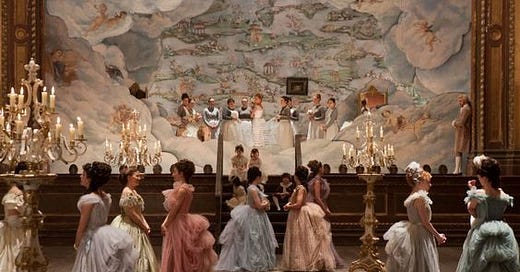should we be able to look at the sun?
anna karenina by leo tolstoy: on the dichotomy between love and lust, the right to fall in love, idealism in relationships, and tolstoy's personal attitude towards love
“If you love me as you say you do,' she whispered, 'make it so that I am at peace.”
I have read this book five times: four times for class, and once just for fun. And my conclusion is always the same: Anna Karenina is as daunting as it is spellbinding.
Spanning 800 pages, Tolstoy tells a cinematic tale that has remained beloved for centuries. At the core of the novel is the theme of love and its variants: all happy families are alike; every unhappy family is unhappy in its own way.
Despite its many political and existential themes and a vast amount of characters, at the heart of the book are two vastly different characters: Anna and Levin. Anna begins a torrid love affair with Vronsky, a charismatic and handsome officer, bound to crash and burn. Levin timidly chases after Kitty, his friend’s sister-in-law, whom he is in love with. Both arcs explore the dichotomy between love and lust, idealism in relationships, and the superficiality of infatuation and lust.
I have read this five times I have read this and can recite some of my favorite paragraphs word for word. Still, I feel inadequate to review this book. This book is so beyond the scope of what words and feelings can explain. But more importantly, each time, I find something new to love and appreciate about this book. this book is dramatic and tragic and heartwarming and devastating all at once—
Maybe it’s Dolly’s palpable sadness at the start of the book. Maybe it’s the fact that Anna endures tragedy after tragedy for her infidelity, while her serial cheater brother suffers virtually no consequences. Maybe it’s the moment where Vronsky describes Anna as nothing but a faded flower. Maybe it’s the way Levin slowly grows into love Kitty as a person, not as an ideal he put on a pedestal (he stepped down, trying not to look long at her, as if she were the sun, yet he saw her, like the sun, even without looking).
Tolstoy manipulates his characters like chess pieces, sometimes building them up and ruining them on the same page. He has such a deep understanding of his characters, and it is because of this that he is able to animate them in a way that makes it feel like one is reading about real people. moreover, he is omnipresent in his novel, weaving a cautionary tale of the dangers of desire and lust, which he believes are the catalysts to the downfall of every relationship.
So who has the right to fall in love? And how do we classify what love is? In other words, should we be able to stare at the sun?





